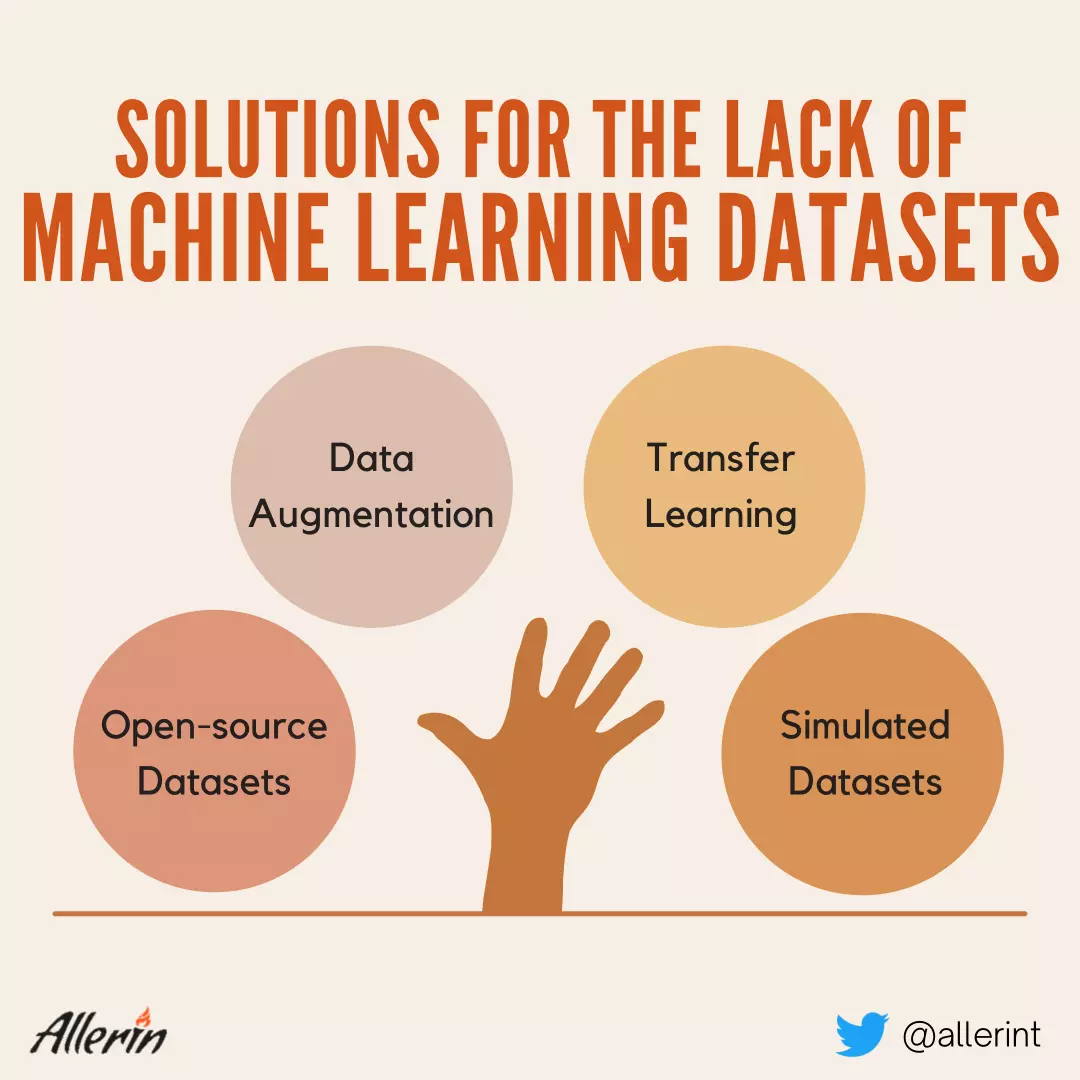Machine learning’s abilities and applications have become vital for several organizations around the world.
Problems, however, can arise if there isn’t enough quality data for the purpose of training AI models. Such situations, in which machine learning data is difficult to attain, can be resolved in a few clever ways.
Machine learning, one of AI’s prime components, is a major driver of automation and digitization in workplaces worldwide. Machine learning is the process of training or ‘teaching’ your AI models and neural networks to serve your organization’s data processing and decision-making needs in an increasingly effective manner. AI models that are prepared with the help of training data go on to be deployed in complex AI-powered systems. As we know, AI closely replicates the working of our brain and nervous system. In that sense, we can liken machine learning to the simple act of visiting a local library to prepare for an examination. Taking the analogy forward, the exam preparations can be derailed if specific books needed for the purpose are unavailable in the library. After all, there can be no ‘learning’ if there is no quality study material available for the process.
Techniques to Resolve the Lack of Quality Machine Learning Data
The lack of quality data is one of the most prominent problems in machine learning. Every organization may face this issue at some point or another during AI implementation. The quality of machine learning data is as important as its quantity as noisy, dirty, broken or incomplete datasets can do more harm than good. Getting quality datasets for machine learning is a challenge that can be resolved with streamlined information integration, governance, and exploration until the data requirements are consistently met. Here are a few ideas to overcome this issue in machine learning:
Using Open-Source Datasets
A gargantuan quantity of data is generated and used every day in an increasingly digitized world made up of millions and millions of devices connected to the internet simultaneously. A small chunk of this data is proprietary with the other significant portion being free to use for the general public and organizations. Open-source datasets are freely available for extensive access, utility, enhancement, and transfer over the internet. Generally, such datasets are released online by public bodies and educational institutes or Non-government organizations (NGOs). The availability and usage of open-sourced data strengthen the democracy and transparency of the internet as we know it. Open-source datasets may be hit-or-miss in terms of data quality, but they are promising solutions for organizations. Here are some useful open-source datasets for a wide variety of machine learning requirements.
Open-sourced data is easily available and just a few clicks away for machine learning experts in your organization. Some of the main benefits of open-source datasets are the reduction of time and effort spent in looking for quality machine learning data. Due to this, the overall machine learning process becomes faster too. Apart from time and effort reduction, machine learning also becomes cheaper with open-source datasets. Organizations may often end up spending thousands of dollars on purchasing datasets from AI service providers.
Some of the main characteristics (and considerations to be taken during open-source dataset usage) of open-source machine learning data are:
- Open-source datasets allow external data experts to participate in an organization’s machine learning process. The enhanced access could be seen as a privacy breach or an opportunity to get more inputs to improve the AI implementation process.
- As stated earlier, enhanced access leads to the involvement of a greater number of individuals in machine learning. As a result, machine learning problems are solved quickly. Also, the greater number of participants in the process boosts the innovation quotient associated with the process.
- Organizations will need to ensure that their data security protocols are strengthened so that data breaches and other cyber-attacks can be avoided due to the sheer number of external entities involved in the machine learning process. Organizations must be careful during the selection of sources from where datasets are attained.
The use of open-source datasets is a somewhat non-technical solution to our main problem here. So, here are some of the more technical solutions that organizations can utilize to overcome a lack of quality datasets.
Creating Simulated Data
Simulated, or synthetic, data is used in artificially created datasets for machine learning. Real datasets are required for the creation of this data, so, an artificially generated dataset can display the same statistical properties as the original one. This familiarity is useful in machine learning as massive variances are prevented in the process (variances between the results generated using the real data and simulated data). Simulated data can be created via the Synthetic Minority Over-Sampling technique (SMOTE). The technique uses minority class data points to create new data points lying between any two closest data points connected by a straight line.
Synthetic datasets can be deployed to build AI models used for machine learning and deep learning. Synthetic datasets provide complete control and ownership to organizations as they need to be created by their in-house experts by utilizing their own resources in the process. One of the main advantages of using simulated datasets is enhanced levels of data security and privacy. As we know, the real datasets from which these are created cannot be shared openly due to legal constraints. Organizations can deploy data privacy tools such as anonymity models to prevent the unnecessary sharing of company information to external entities. As a result, data losses are significantly lower than other machine learning processes. Despite the enhanced data safety, synthetic datasets can still be openly published, shared, analyzed, and modified without giving away too much information to external (and, most likely, unauthorized) entities involved in the process.
Additionally, synthetic datasets can guarantee that organizations stay compliant with global data security and privacy constraints.
Carrying Out Data Augmentation
Data augmentation is a clever way to maximize the size of a dataset without accumulating additional data for the purpose of machine learning. Data augmentation can be brought about by using domain-specific methods to create distinctive training examples for machine learning. The process of data augmentation enhances the variability of a dataset.
This technique is used commonly to create image-oriented datasets. As a result, this process creates altered copies of images so that neural networks can identify them as distinct images. On top of that, this process reduces overfitting during machine learning. So, it solves the problem of poorly-lit images or those with poor clarity and visibility by creating increasingly perfect copies of them. The process of augmenting an existing dataset can be carried out as follows:
- Initially, data scientists plan and come up with options regarding the quality and usability of existing datasets. After that, they boost the number of data points to generate a greater number of images or text-form data.
- Augmented datasets contain large swathes of data generated from existing datasets. These modified datasets are then used for the purpose of machine learning in organizations.
Augmented data offers a good amount of high-quality and familiar datasets for better machine learning. Organizations struggling to find high-quality datasets can use this incredible technique to improve their overall AI implementation process.
Deploying Pre-Trained AI models
Transfer learning is the process of using old, pre-trained AI models to make the process of machine learning quicker and less cumbersome. In this process, data analysts and other AI experts use AI models that had been used earlier for training AI neural networks for operations that bear a resemblance to their existing tasks. Transfer learning allows organizations to save time and resources by not reinventing the wheel for machine learning. Brand new datasets are expensive to procure and using old ones makes economic sense for organizations looking to digitize their operations. Some of the main benefits of transfer learning are:
- AI-powered systems trained through transfer learning show similar or better performance and results compared to systems trained in a conventional way.
- Transfer learning negates the need for organizations to extensively label and curate data for machine learning purposes. AI models trained through transfer learning provide steady performance in predictive forecasting as well as pattern and anomaly recognition.
As stated earlier, the problem of machine learning data shortage will be encountered by most businesses at some point during the machine learning implementation process. So, they can use the above-mentioned methods to solve such a problem during and after AI incorporation. A lack of quality datasets can create several problems, such as biased AI and a lack of consistency in AI performance. Therefore, organizations must put in the effort to overcome this problem.
In other words, if you cannot find a book you are looking for in your local library, you won't sit and moan about it. Rather, you would visit an alternate library or bookstore and carry on with the exam preparations.




Leave your comments
Post comment as a guest